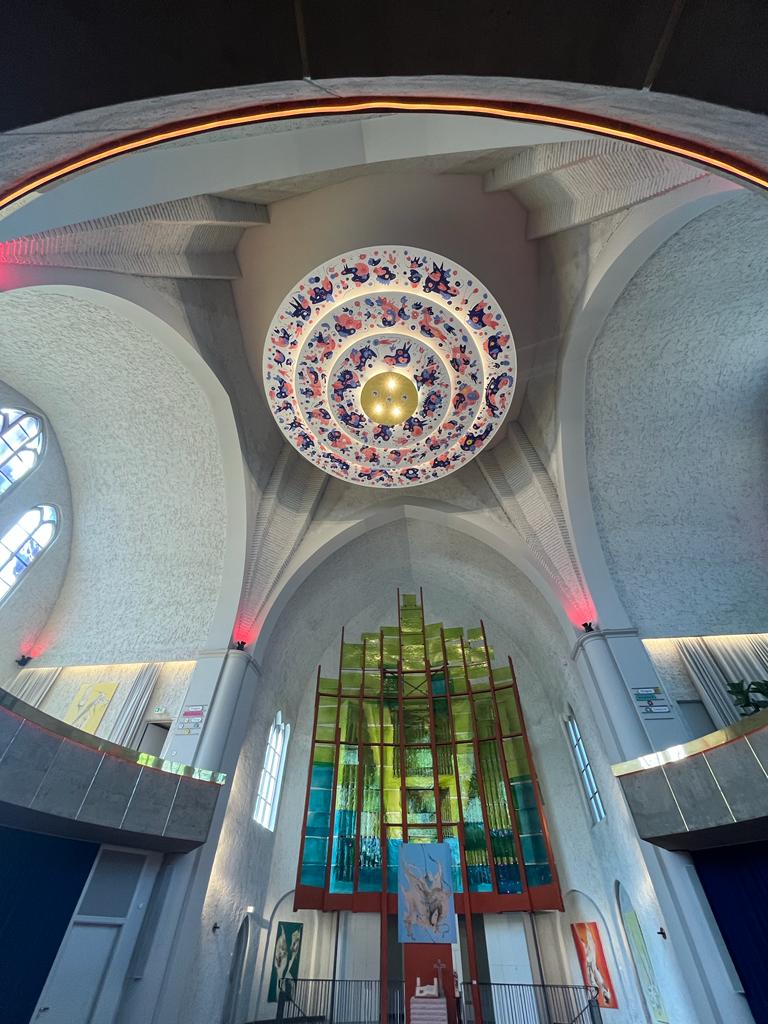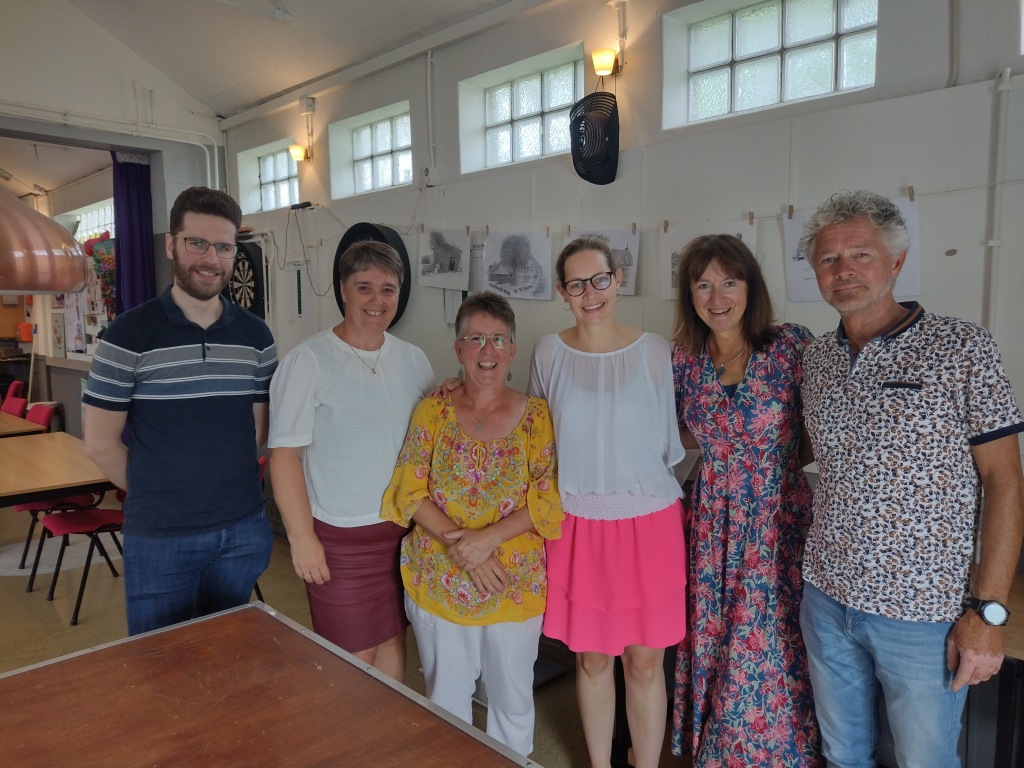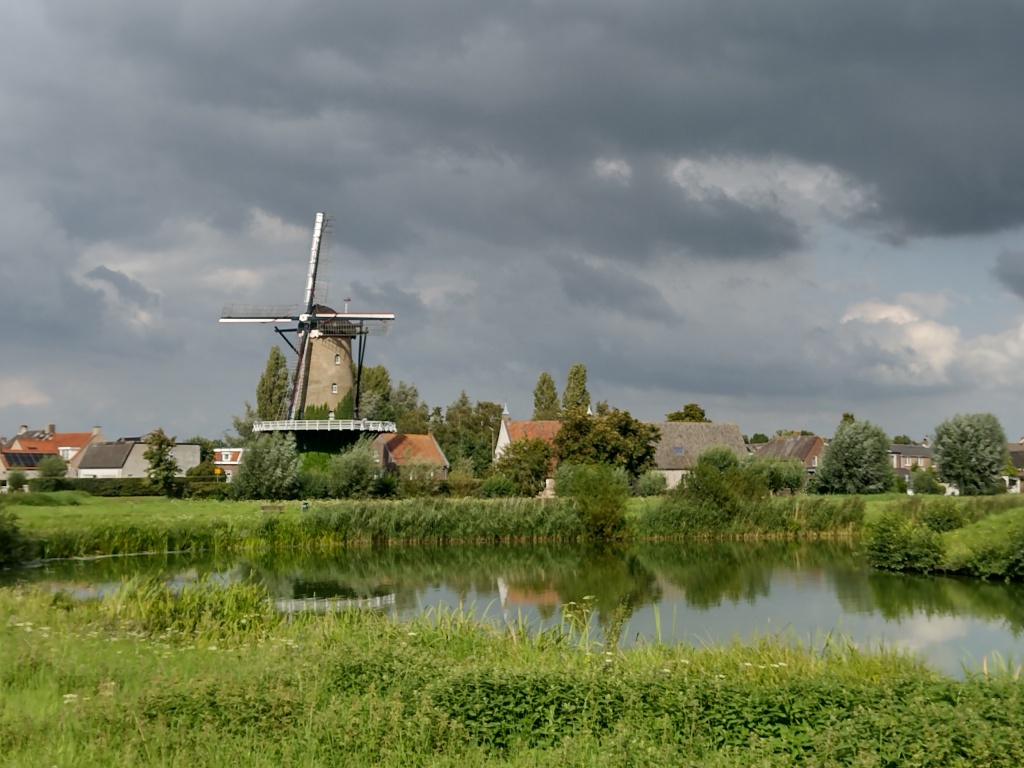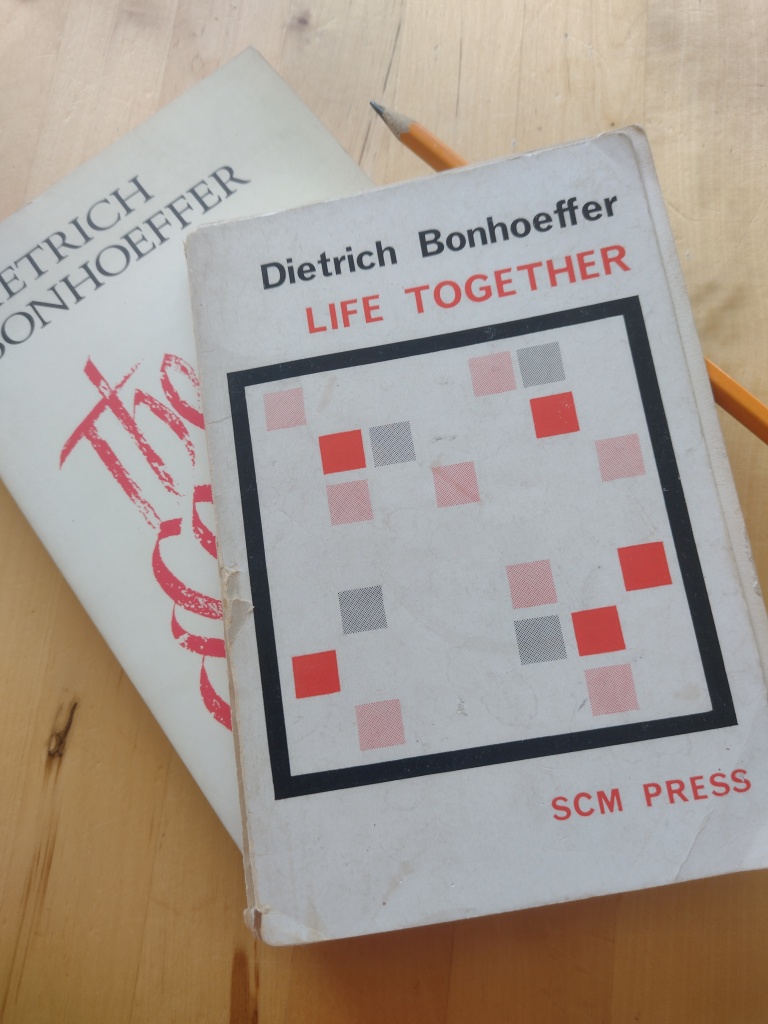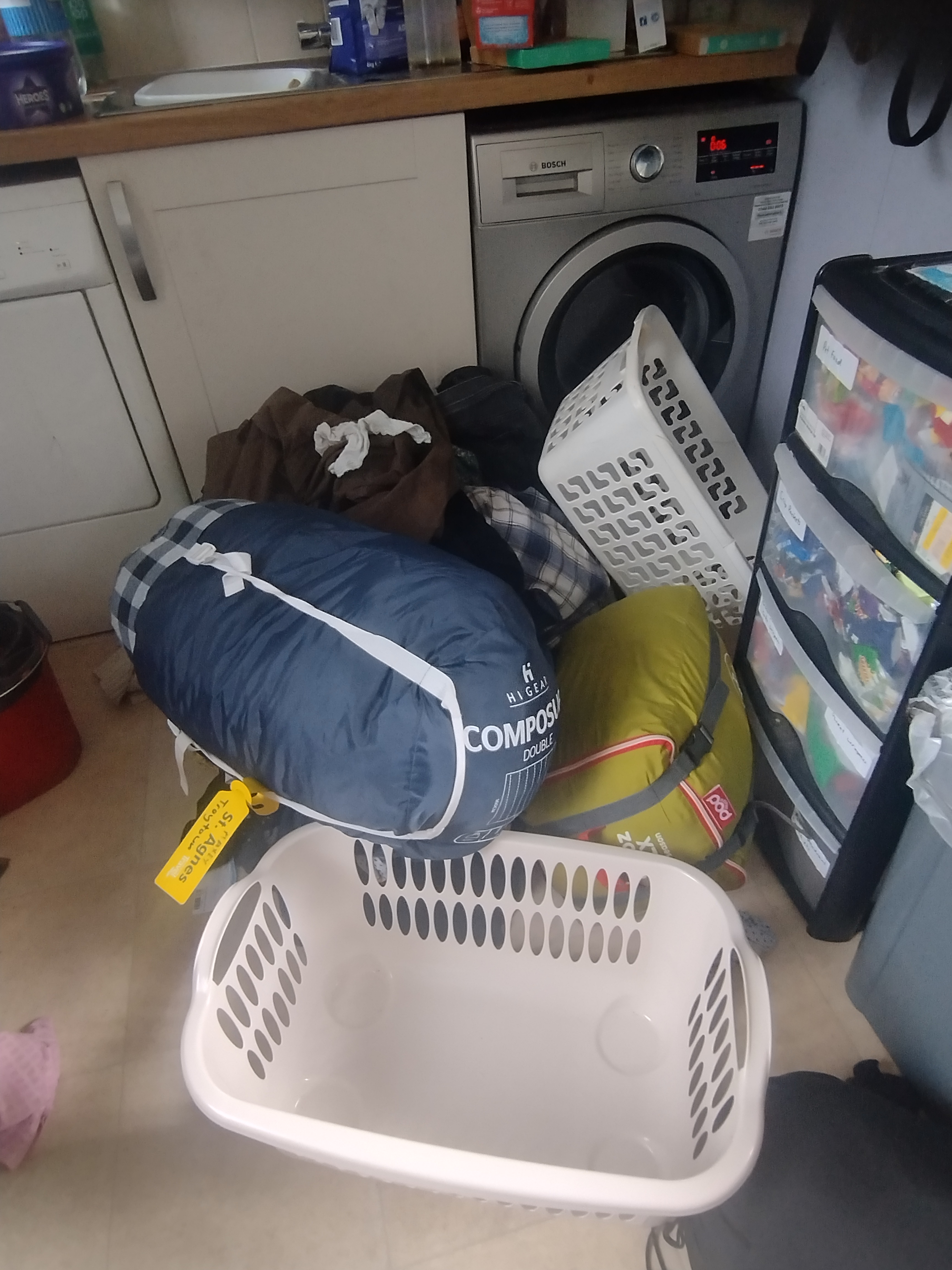“Mum, where are you?” Was the moment I realised I had just gone up three floors in the wrong apartment block for our Airbnb! It was late and I was tired after the long journey, what a relief to see Hannah at the door of the right block just the doorway before. It is a perfect apartment (except for the three flights of stairs with no lift!) Directly behind the Gellért Baths and a 3-minute walk from the Danube, and best of all my lovely daughter here to spend time with her Mum for a few days.


This is the last place on my ‘European’ tour but had been the first place I had decided to come to. Last October I had the privilege of being here for a European Conference for the Protestant Churches looking at ‘mixed economy churches’, the bringing together of old forms of church life and new. On the first day of that conference a young Hungarian woman Pastor, from the Evangelical Lutheran Church of Hungary, had spoken briefly about the work she was doing in one of the poorer districts of Budapest, and there was something about her and what she said that, even with that brief presentation, made me want to know more.
So here I was, with Hannah in tow, spending the morning meeting and listening to all that Marta has done in Budapest. We took the Metro over and then walked the last 10 minutes; it was clear we were no longer in ‘tourist’ Budapest. We finally found the large door to what looked on the outside like an old run-down building, but as we pushed it open it was like coming into a little oasis; this was Mandak House. A large central garden area with trees, children’s toys and play equipment, washing hanging up, a decorative mural on the entrance wall. Hannah said, “This is like Olinda”, which is the family area in Taize that we have visited throughout her childhood. She was right, there was that same welcoming but chaotic sense, something special.

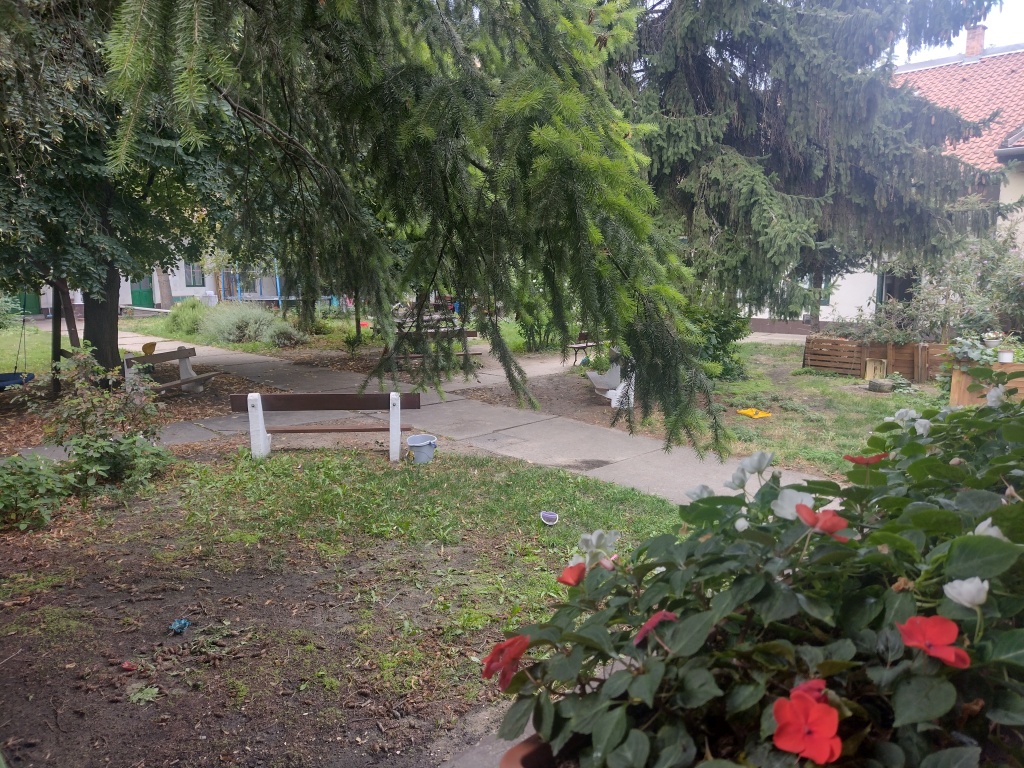
The layout is a large central garden area and then it is surrounded on all sides by buildings, which as Marta described, have been home to a wide range of people over the years. The church itself is simply part of the rooms that surround the central area and is directly opposite the courtyard entrance from the street.
Marta emerged from one of the rooms and we sat down in her kitchen over a cup of tea and talked (well Hannah and I sat down, Marta did the usual multi-tasking of cooking lunch for children while talking about the history of this place). The house and all the grounds were given to the Lutheran Church over 70 years ago by a woman who had no children to pass her inheritance onto. The large room that is now the church was a stable for the animals and the central area was simply stones and rocks. When the church took over the house after the 2nd World War, they started to plant trees and greenery and so this beautiful garden began to grow.
At that point there was still no church despite the Lutheran Church owning the buildings. It was during communism in the 1950s, at a time when many churches were being demolished and closed that they turned the stable into a church. It was like a quiet rebellion, this small hidden away church being opened ‘under the radar’ when so many were being closed by the communist regime. During this period a group of religious sisters moved into the building, their nunnery had been closed down, but they moved into the house here, no longer dressing visibly as a monastic order but ‘secretly’ keeping their common life of prayer and community going in this place. I had a sense that these buildings had for a long time been a place of prayer and sanctuary for many and that they continued to be so.
The Lutheran Church has recently celebrated 50 years of women in the ministry and Marta recalled how when they first started training women at the theological college, they did not want the women and men to live together in the same accommodation so Mandak House began to house women theological students. Marta said that many of the older priests in the area have fond memories of Mandak House and all the romances that were born here: the male theological students coming and helping carry the coal out of the cellars for the women, the last kisses through the letter box. A place full of memories!
In recent years, though, the church and the surrounding buildings were increasingly slipping into disrepair. The attic rooms had no proper fire escape so could not be used, most of the small apartments around the courtyard housed elderly members of the church community, there were mushrooms growing from damp issues in the buildings. When Marta arrived the buildings were a health and safety nightmare! So, in some ways it is no surprise that she was told that the church hierarchy had decided they wanted to demolish the complex, there was only a small congregation, the buildings were in very poor repair and by selling it the church would make a lot of money as the land could be used for redevelopment.
This was Marta’s first church as a newly ordained minister and she quickly realised that the church had sent her for hospice ministry, to help the church die well, she was very shocked and was not prepared to start her life as a minister by closing a church. Marta comes across as a very gentle person, she is softly spoken, stops and listens to people, but she also clearly has a steely determination to do what is right. The decision not to do as she was asked, as a newly ordained woman minister, of course brought her straight into conflict with the Church hierarchy, she was seen as a rebellious and lacking respect for the Church authority’s guidance.
So, what did she do in response to try and convince them? She organised a party! (A woman after my own heart!) In that first week she decided to arrange a church party in the garden. She had connections with a singing group who she asked to perform, she made flyers and invited people who she had connection with in the neighbourhood, she invited everyone who lived at Mandak House (and they invited their families), her friends made food and she invited the Church hierarchy to come too, and the they were amazed! Marta herself called it a miracle, suddenly this place that they had perceived as dying was full of life and they agreed to allow her to ‘give it a go’.
It was not an easy start, many of the small older congregation were not happy with what they saw, so many ‘different’ people in what had been ‘their’ space, children dancing in the church, a young woman minister who clearly did not respect the hierarchy of the church. The congregation basically split; 50% were totally opposed to Marta, they were very right-wing and racist in what is a very Roma neighbourhood (the Roma make up about 8% of the Hungarian population but they are very discriminated against and live in a high level of poverty. In the area of Mandak House they make up about 30% of the population). The half of the congregation that were opposed to Marta’s ministry tried hard to blackmail the other 50% by saying they would leave if she stayed. It was an extremely stressful start, and I was impressed how she had managed to stay strong. She said that for the first three months she had hardly been able to speak because she was so stressed. Importantly the Bishop was by now very supportive of Marta and really encouraged her to stay strong and to not quit. The 50% in the end left, in reality only four people, but they were extremely hateful. How ever hard it was for Marta it had to happen for the new things to emerge.
I am always a fearful of conflict and find it very hard but what Marta has done at Mandak House would never have happened if she hadn’t had the courage to both stand up to the church hierarchy and to those within her own congregation. Such conflict is not easy and obviously painful, and something to be avoided, if possible, but sometimes it is also necessary. I thought the words above the church door (which are the Lutheran Church motto) was very apt: ‘A Strong fortress is our God’.
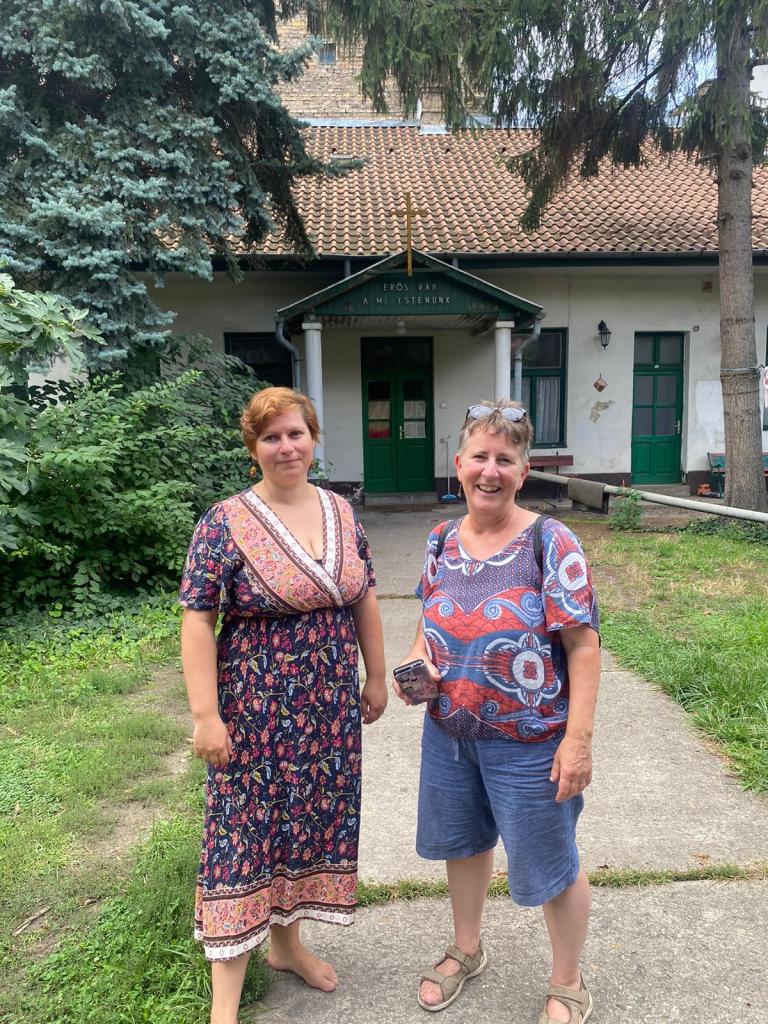
It was interesting listening to how Marta had then started work in the area and how, much like me, her focus had been, and continues to be, on building relationships. She began by talking, networking and connecting with people both in the church and in the community. In terms of the church community, she used the ‘membership’ list, most of whom she never saw at church but who continued to give financially, and she went and visited every member on the list. By doing so she started where they were, but also confirmed that the majority were in the 80s, old and ill and while delighted to see her would not be the basis for something new. She recognised that she could spent her entire time supporting this group of people, and while that is important, she felt that is not what she had been called to. Many of us as ministers today will arrive into a similar context with an elderly, often housebound congregation, and it is important to recognise what our calling in that context is.
Parallel to that she visited all the NGO’s in the area, all the Government groups, all the community groups, and would say: ‘Please drink coffee with me and let’s talk about what you do and what I can do with you’. Marta loved this relationship building and reaching out to the community around and she is clearly very good at it. From those connections ‘a river began to flow’. It was also the same time as the new more right-wing Government came into power in Hungary and many of the NGO’s and community groups lost their funding. Marta was there both as an individual but also significantly representing the church and was there listening to these groups at a time when it was very difficult: She said: “I listened to their work and their political struggles, in housing issues, 3,000 drug addicts living in this neighbourhood”.
In the beginning there wasn’t physical space to offer, that was something that began to emerge in time. Marta came in as a Pastor and bringing that status into political campaigns for housing, speaking at political meetings, supporting the local groups. Marta was there in a representative role. I found that very interesting as I have always shied away from the idea of having a representative role, and here it was clear how powerful that could be. Through Marta’s visibility new, younger people came and connected with Mandak House, it was an organic growth through providential encounters people were brought in who were interested in getting involved in the wider community and some also connected to Church. There was a children’s group for the Roma that was started in partnership, a creative arts project and much more over time.
Crucially she also managed to get money from the supportive Bishop to begin to make the building usable; a large sum came from the giving of the German Lutheran Church and other sources to begin to breathe new life into the crumbling building. A community room was created, the student accommodation in the roof area became usable again. The flats and accommodation were increasingly filled, and the money raised from the rents could go back into the building. As the older people died the flats became available and she then offered them to the local NGO’s to use and rent. A local Roma support group moved in, a group for Fostering and Adoption, and then after the Syrian Refugee Crisis a local refugee group rented a room, and they then went on, over time, to rent a further five flats, as and when they became available, as crisis apartments for refugee families. Each family live for a maximum of three months as they get themselves back on their feet. A little Ukrainian boy on a plastic scooter sped past us as we chatted as if to illustrate the point.
Marta (and the church) have used the space so creatively with the constant focus on the poor and excluded, her Christian vision is at the heart. While the rent helps the whole place keep running it isn’t about simply renting the space it is about how you offer a space for community partnerships to grow. Every Wednesday there is a community dinner that is open for everyone, that brings together all the people who are based here and makes it so much more than renting a building. I would have liked to ask who are the body that decide who can rent the various spaces and how is it managed but it slipped my mind. I suspect it is the board of the church and in the long run expanding that group will be important.
The church itself is a small traditional building and the Sunday style is liturgically and traditional. During my ‘tourist’ time in Budapest Hannah and I visited St Stephen’s Basilica, the contrast of this hugely ornate building and the simplicity of the church at Mandak House was very marked. For me it was this simple building that once was a stable that spoke to me far more of God than all the gold and grandeur.

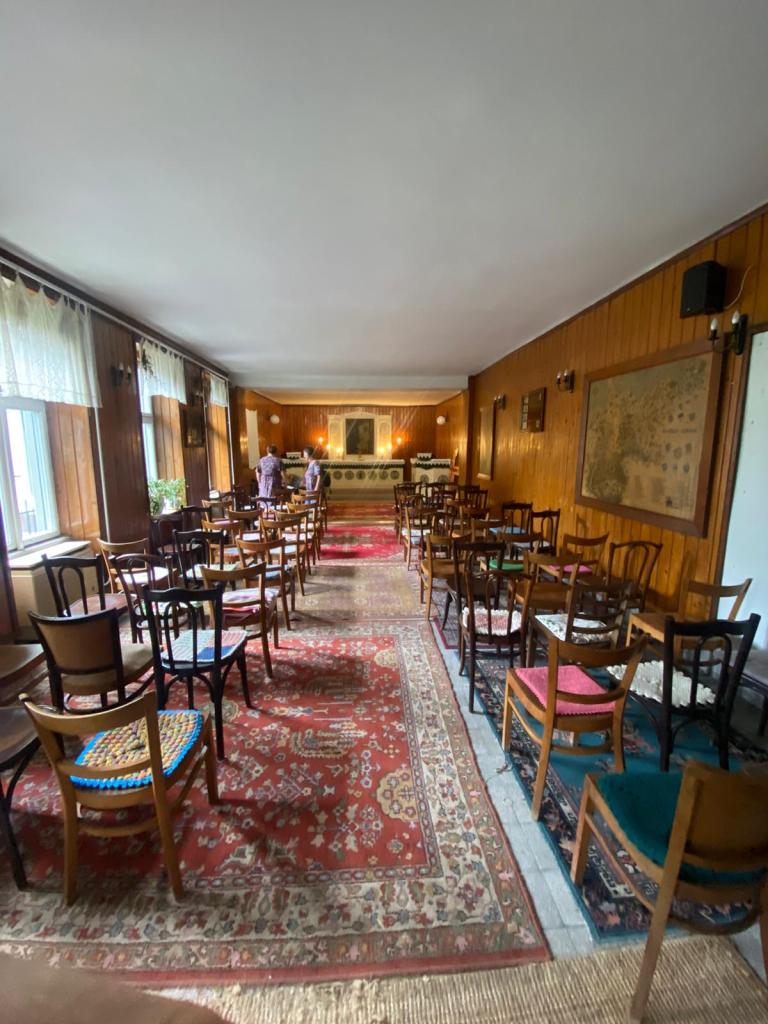
Marta feels maybe it is time to find ways to begin to change and move in terms of worship but she wanted to respect those older members who remained. There are only five to ten people on a Sunday. When I joined them on Sunday morning it was a very simple traditional service with no children but a younger age demographic than some communities (in other words not all in their 80s!) Marta wants to begin to focus on the worship but has the big challenge of a range of separate worshiping groups but only the Sunday morning having a formal status and power. There are several things that she will need to address moving forward both in how to find ways of making sure the place of power and decision making reflects the whole community, but also how to open up the worship to connect with the many people who are drawn to Mandak House.
On Fridays they have 25 children coming for play and bible stories, then their parents come and join with them for a meal. This is effectively another worshiping community but because it isn’t liturgical and there is no communion, she doesn’t feel that it can be recognised as such. There is a huge challenge for Marta in terms of how to connect these different communities that she has grown and is part of. She is very aware that the Sunday gathering has not been her focus but begins to wonder whether now she needs to find a way to develop that in new ways.
The Lutheran Church is stricter and clearer on liturgies around communion than my own tradition in the URC, and that makes it more challenging. She does not want to upset the older community and is aware of the different tensions around. This also links in with being welcoming to the LGBTQ community (again in Hungary there is a huge right-wing hate rhetoric against the LGBTQ community that many simply accept). At Mandak House they allow the Christian LGBTQ community in Budapest to come and use the church on a Saturday; so, included but not part of, separate but supported. At the community gardening event, they all came to help, from the LGBTQ community, the Friday group, the residents, all working together on the beautiful garden and slowly the relationships began to build. Mandak House is a place of building bridges through the use of the space, but also very critically, through the relationship building that Marta has been, and continues to be, involved in. I recognise parallel challenges to my own context where so much of the community and relationship building has been through me as an individual and how to expand that, so it has a level of sustainability and is more than an individual. Marta spoke of similar challenges but she also has the focus of the space itself as a way that connects people.
I thought of the party she had started with at the very beginning of her time and wondered whether a party was needed again to bring together all the different worshiping groups, but a party that was focused on worship, on sharing the bread and the wine together. Her theology gives great emphasis on communion so to find a way for these different worshiping groups: Sunday Congregation, Saturday LGBTQ, Friday family….and then maybe the students and refugees as well, to share in communion together, even if only occasionally, would be very special.
Marta herself moved in 9 years ago and lives with her family, she has had three children during the 10 years of her time here as well as all she has done with the community. I asked her how she found living and working in the same space, that total overlap of relationships. It clearly is mostly good but at times she has also been near burnout. When the Ukrainian refugee crisis hit it was particularly overwhelming. Mandak House opened their doors and were a place where people came, with over 200 to 300 people coming every day in order to access support. Marta realised it was too much and the decision was made to rent another building and employ someone to manage the refugee work. The funding came by making the Mandak House congregation (tiny as it is) into a legal entity and it became a United Nations Partner Organisation. This was a huge piece of work and a bureaucratic nightmare, but it has meant that they are able to access a much, much wider range of funds for the amazing refugee work that they are doing.
Marta took us across the city to the building that is now used for welcoming refugees. It was closed the day we visited so we only saw the space not the people, but it was easy to imagine what an important and vibrant place it would be. There was a big room with places for children to play. There were 2nd hand clothes for those who needed them, opportunity to sign up to language course, help offered in looking for accommodation and work and of course the support in navigating the complicated Government system. It is remarkable to think that this all grew from what had been happening in Mandak House and that it was primarily through Marta’s gentle determination and ability to work with people that this had all happened.
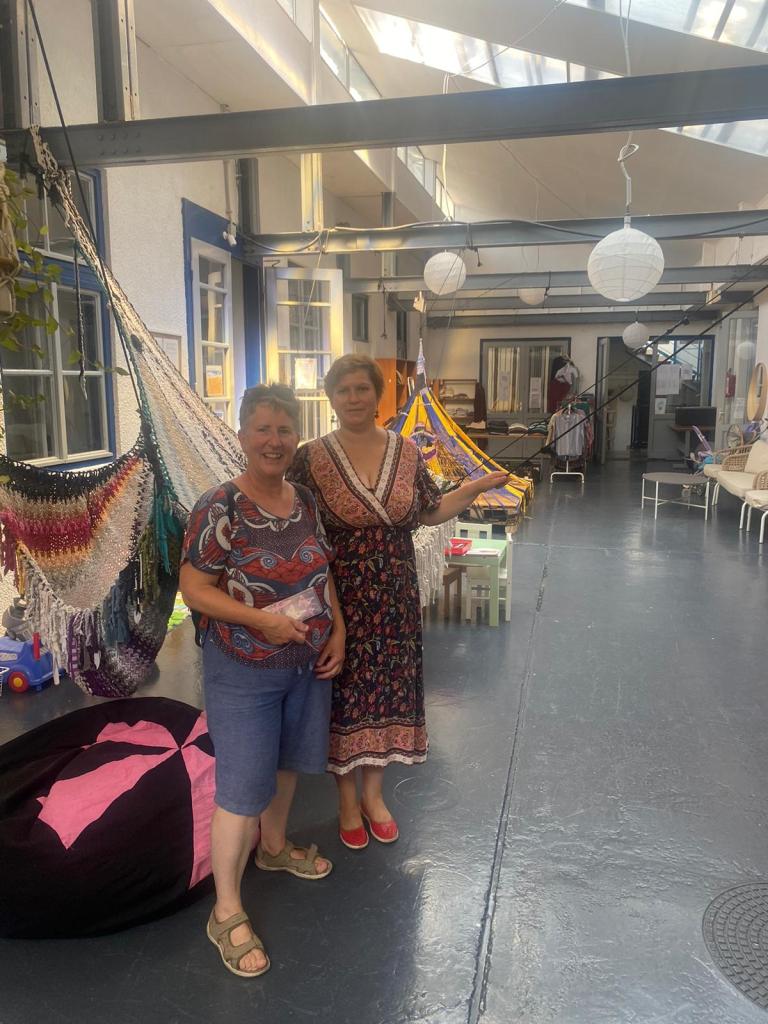
Marta commented that she is not very good at publicity and struggles to get those sorts of things done. Sometimes we get very focused on how things look, what we present to the world, this was a place that was about the content and not the cover and it was hugely inspiring. I have come away with so much to think about and reflect upon.
This is a link to a video that was made about Marta and Mandak House and probably gives you a better understanding of all the work she is involved in. YOUTUBE VIDEO
I am now on the Eurostar home at the end of a nearly 24-hour train journey back from Budapest, including a lovely night on the sleeper watching. It was a wonderful visit. I found my time with Marta and looking round Mandak house so inspiring. I also had some lovely times with Hannah enjoying the baths and a cruise down the river. I can’t quite believe that I will be back on the Eurostar this time next week as I head to France for a week at the Taize community. I feel as if my sabbatical is like a delicious meal with so many different and tasty courses. There is, therefore, a lot to digest! These last 10 days, as I have travelled and visited SO many interesting church communities, has been amazing. It is so easy to only see our small corner of the world and forget the ways in which people are faithfully trying to live out what it means to follow Jesus in so many inspiring ways…..I have also loved my trains!! The green way to travel, and the best way to travel!






